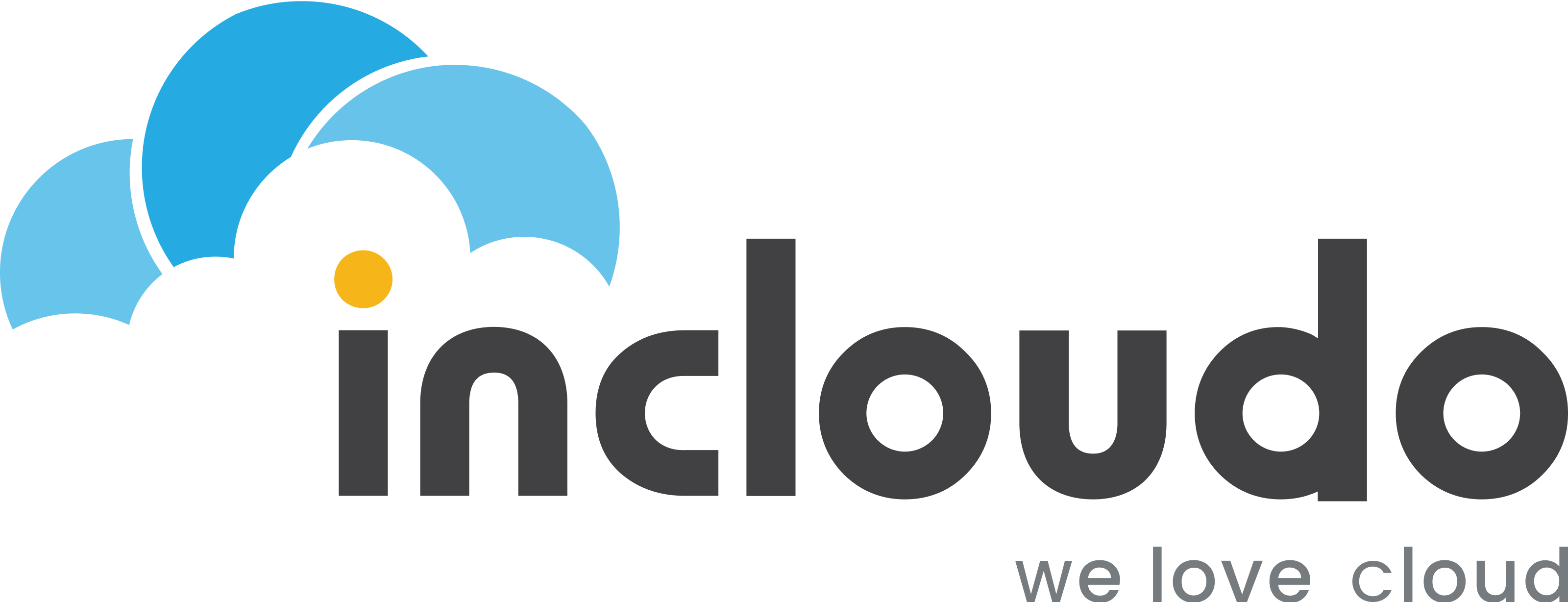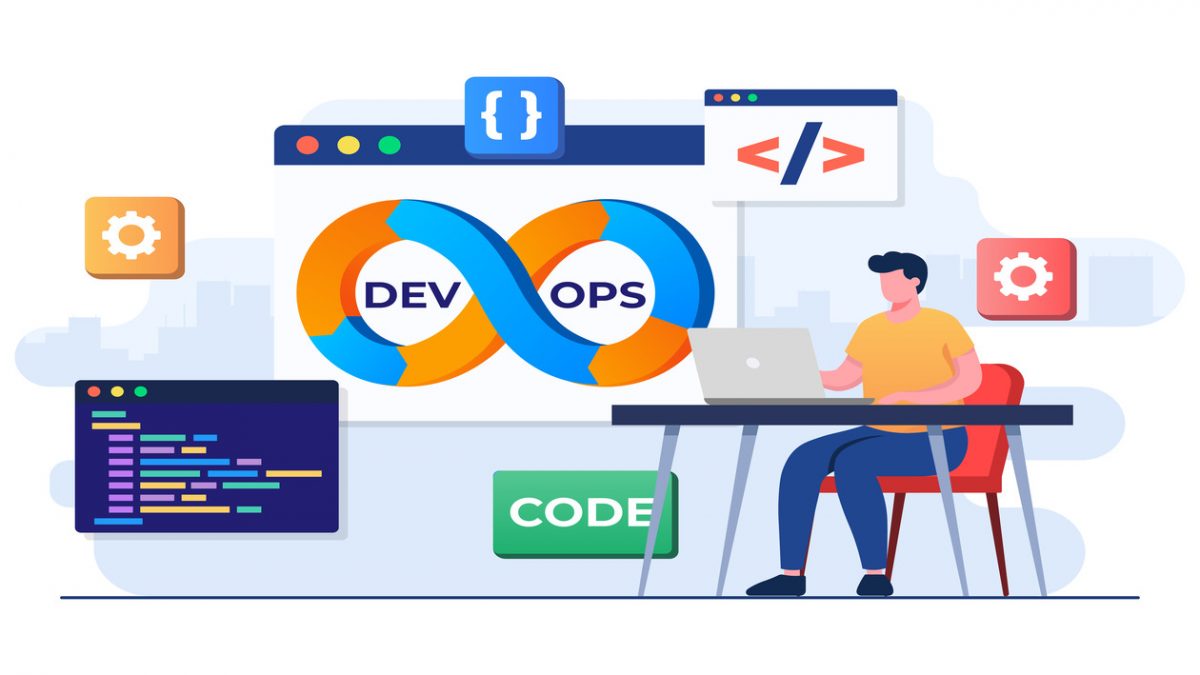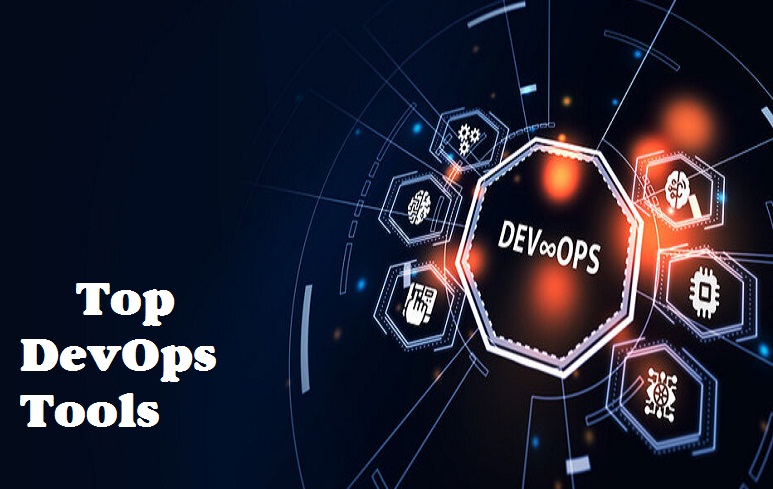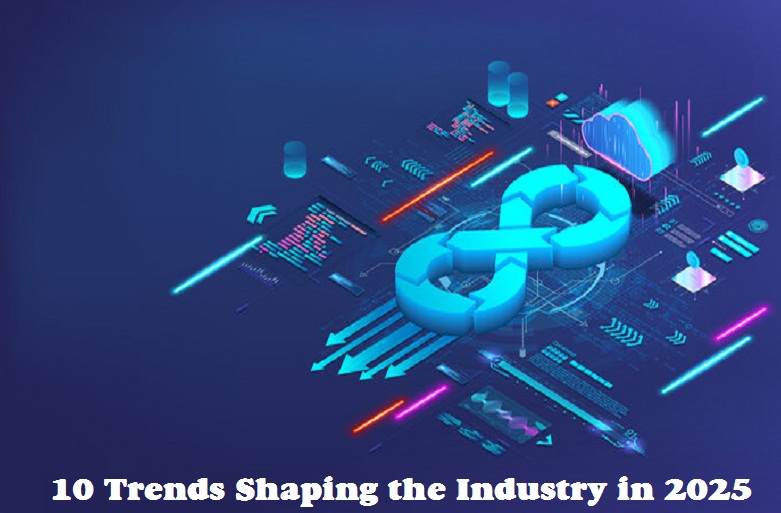The Benefits of DevOps for Software Development Teams
August 31, 2023
How DevOps is Evolving: 10 Trends Shaping the Industry in 2025
April 3, 2025The world of software development and IT operations has evolved drastically over the last decade, with DevOps at the center of this transformation. As we approach 2025, it’s essential to examine how this methodology will continue to shape the landscape of technology. DevOps trends have shifted the way companies develop, deploy, and maintain software applications, fostering an environment of collaboration, continuous integration, continuous delivery (CI/CD), and more.
So, what’s next? In this blog, we’ll explore the emerging trends, tools, and practices that will define the future of DevOps in the coming years.
1. The Rise of AI and Automation in DevOps
One of the most exciting predictions for the future of DevOps is the continued integration of Artificial Intelligence (AI) and Machine Learning (ML) to automate tasks further and improve workflows. Already, we are seeing automation tools like Jenkins, GitLab CI, and others play a significant role in CI/CD pipelines, but as AI matures, so will its role in DevOps.
What this means for DevOps:
• Predictive analytics: AI will be used to predict issues before they occur, whether it’s a bottleneck in the pipeline or a potential system failure. AI-driven tools can analyze historical data and offer insights on how to avoid errors in the deployment process.
• Automated testing: With AI, automated testing will go beyond simple script execution. AI will help understand user behaviors and predict what tests need to be run based on previous results.
• Self-healing systems: AI could be used to identify and even resolve issues in production environments autonomously. For example, if a service experiences an unexpected downtime, AI tools could automatically adjust configurations or provision additional resources to maintain stability.
By embracing AI and automation, DevOps teams can significantly reduce manual intervention, allowing them to focus on more complex tasks while improving overall system reliability and performance.
2. DevSecOps: Security Becomes Integrated into the DevOps Lifecycle
Security has always been a concern for software development teams, but as cyberattacks become more sophisticated, the focus on integrating security into DevOps workflows will be critical. DevSecOps, which focuses on building security into every phase of the software development lifecycle, is expected to grow even further by 2025 and beyond.
What this means for DevOps:
• Shift-left security: Security tools and practices will be integrated early into the development process rather than at the end of the lifecycle. Developers will be able to run security scans during the coding and testing phases, preventing vulnerabilities from reaching production.
• Automated security testing: Much like testing code for functionality, DevOps teams will implement automated security checks that run continuously, identifying vulnerabilities before they can be exploited.
• Security as Code: Infrastructure and integrating security in CI/CD will be codified. This approach allows for more consistent and repeatable security practices that can scale across multiple environments.
By embedding security earlier into the process, DevSecOps aims to create safer applications while maintaining the speed and agility that DevOps brings.
3. The Continued Growth of Cloud-Native Technologies
Cloud-native technologies, such as Kubernetes, containers, and microservices, have transformed how DevOps teams deploy and manage applications. In the next few years, these technologies will continue to evolve, shaping the future of DevOps.
What this means for DevOps:
• Serverless architecture: Serverless computing, where developers only pay for the compute time they use, will become a dominant method for deploying and scaling applications. DevOps teams will need to adopt new approaches to manage serverless environments and ensure scalability without over-provisioning resources.
• Kubernetes and container orchestration: Kubernetes will continue to dominate as the container orchestration platform of choice. New tools and platforms will emerge to simplify the management of Kubernetes clusters, making it easier for DevOps teams to deploy and scale applications.
• Hybrid and multi-cloud strategies: The future of DevOps will see organizations embracing hybrid cloud and multi-cloud strategies, allowing them to distribute workloads across different cloud providers of the top devOps companies in Bangalore.
DevOps teams will need to build automated pipelines that can operate seamlessly across different cloud environments.
Cloud-native technologies will remain at the forefront of DevOps practices, offering greater flexibility, scalability, and efficiency for software development and delivery.
4. GitOps: Managing Infrastructure as Code
GitOps is an operational model that extends DevOps principles to infrastructure management. It leverages Git repositories as the source of truth for declarative infrastructure, making it easier for DevOps teams to manage and track changes to both applications and infrastructure.
What this means for DevOps:
• Version-controlled infrastructure: By storing infrastructure configurations in Git repositories, teams can track changes to infrastructure just as they track code changes. This approach simplifies rollbacks, auditability, and collaboration.
• Enhanced collaboration: GitOps streamlines collaboration in DevOps teams and operations teams by allowing them to work with the same tools and processes. Since the entire infrastructure is managed as code, developers can make changes to infrastructure configurations and push them to Git repositories, triggering automated deployments.
• Improved consistency: By adopting GitOps, organizations can reduce the risk of human error when managing infrastructure. The use of declarative configurations ensures that infrastructure is set up and maintained consistently across all environments.
GitOps is expected to grow significantly, especially as the demand for infrastructure-as-code (IaC) increases. It helps streamline workflows, reduce complexity, and foster better collaboration between teams.
5. Increased Focus on Observability and Monitoring
As organizations continue to embrace more complex systems, observability and monitoring will become more critical. DevOps teams will rely on advanced observability tools to ensure they can monitor, troubleshoot, and optimize their applications and infrastructure in real time.
What this means for DevOps:
• End-to-end monitoring: Traditional monitoring tools focused on specific parts of the system. In the future, DevOps teams will require end-to-end observability that tracks everything from the user interface to backend systems. This will provide deeper insights into system performance, user interactions, and bottlenecks.
• AI-powered insights: Much like AI’s role in testing and automation, AI will also play a significant role in enhancing observability. By processing large volumes of log and metric data, AI-powered tools will help teams detect anomalies and predict issues before they occur.
• Proactive incident response: With better observability, DevOps teams will be able to address issues before they affect users. Proactive monitoring will reduce downtime and improve application reliability.
With observability becoming a cornerstone of the DevOps practice, teams will gain better visibility into their entire ecosystem, allowing for more efficient troubleshooting, performance optimization, and a better user experience.
6. The Evolution of Continuous Integration and Continuous Delivery (CI/CD)
CI/CD pipelines have been a fundamental part of DevOps for years, but as the industry evolves, these practices will evolve with it. The next wave of CI/CD will be more intelligent, faster, and more integrated with cloud-native technologies.
What this means for DevOps:
• More innovative pipelines: CI/CD pipelines will become more intelligent, incorporating more advanced analytics and machine learning to optimize the development and deployment process.
• CI/CD for microservices: As microservices architecture becomes more popular, DevOps teams will need to adapt their CI/CD pipelines to deploy and manage multiple independent services, requiring better orchestration and management tools.
• Shift to low-code/no-code CI/CD: As DevOps becomes more accessible to a broader audience, there will be a shift towards low-code and no-code CI/CD solutions. This will democratize DevOps practices and make it easier for teams with less technical expertise to manage their pipelines.
CI/CD will remain at the core of DevOps but with increased automation and better integration with modern software architectures.
Conclusion
The future of DevOps looks bright, with continued advancements in AI, security, automation, and cloud-native technologies. As we move into the Future of DevOps in 2025 and beyond, organizations like Incloudo that embrace these changes will be better positioned to develop and deploy software faster, more securely, and with more excellent reliability. By focusing on automation, observability, and the seamless integration of new technologies, DevOps will continue to evolve and drive the next wave of innovation in the software development lifecycle. As a result, DevOps will be even more critical to businesses aiming to stay competitive in a rapidly changing digital landscape.



